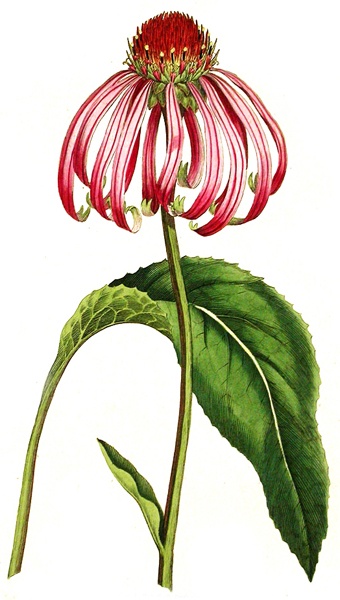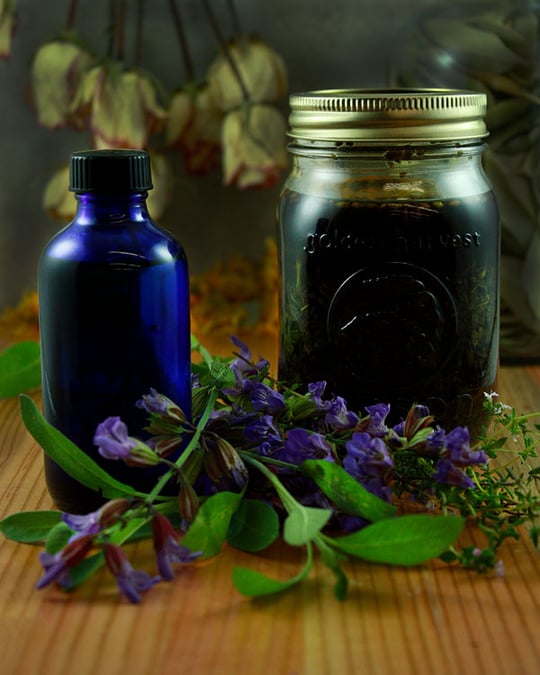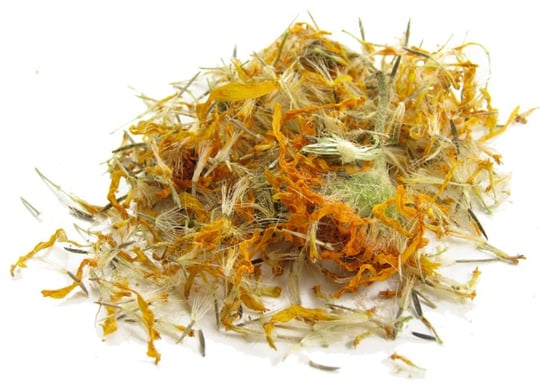Simple to make, herbal liniments are a great element for any home first aid cabinet!
Liniments can be formulated to warm or cool. Warming herbs like black pepper, cayenne, or ginger can be added to help support normal blood circulation and assist with everyday stiffness. Herbs like peppermint or menthol crystals are useful for general cooling.Basic Herbal Liniment
This recipe provides the basic guidelines for making herbal liniments and is completely customizable.
Ingredients
- Rubbing Alcohol or other menstruum of choice. *See note below.
- Fresh or dried herbs. Popular choices are: arnica, black pepper, calendula, cayenne, chamomile, comfrey, echinacea, eucalyptus, ginger, goldenseal, lavender, myrrh, oregano, oregon grape root, peppermint, rosemary, St. John’s wort, thyme, and yarrow.
- Optional additions: menthol crystals and/or essential oil(s) of choice.
- Place herbs in a clean glass jar. If using fresh herbs, chop them first.
- Cover thoroughly with rubbing alcohol or other menstruum of choice, and cap with a tight-fitting lid.
- Place the jar in a warm area and shake daily or as often as possible.
- After 4-6 weeks, strain the herbs out using cheesecloth.
- If desired, add Menthol crystals (they will dissolve in alcohol) and/or essential oil(s). Pour the liniment into dark glass bottles.
- Make sure to label the liniment for “External Use Only”.
When properly stored in a cool dark place, the liniment will keep almost indefinitely.
To use: gently rub onto skin and allow to evaporate. Be careful not to rub too hard or vigorously as this can cause irritation.
Note: Rubbing alcohol is typically used to make liniments because it extracts the herbal constituents and rapidly penetrates and evaporates from the skin. You could also use Vodka, Witch Hazel Extract, or Vinegar as a solvent. Basically, you’ll need a menstruum to extract the properties of the herbs which will absorb quickly and deeply to penetrate skin. If alcohol alone is too harsh or drying on your skin, try mixing it with Witch Hazel Extract or Vinegar until you find a medium that works for you.

Kloss Liniment
Available in Rosemary Gladstar’s book Medicinal Herbs: A Beginners Guide, this very old and strong recipe was first published by the famous herbalist Dr. Jethro Kloss in his classic book Back to Eden in 1939. Kloss's liniment is useful for helping occasional sore muscles. Instead of Goldenseal, you can also substitute Chaparral or Oregon Grape Root.
Ingredients
- 1 oz. organic echinacea powder
- 1 oz. organically grown goldenseal powder (may substitute chaparral or Oregon grape root)
- 1 oz. wildharvested myrrh powder
- ¼ oz. organic cayenne powder
- 1 pint Rubbing Alcohol
Directions
- Place the powder in a jar and cover with rubbing alcohol (a food-grade alcohol can be used, but rubbing alcohol seems to work best), leaving a good 2-inch margin above the herbs.
- Cover with a tight-fitting lid.
- Place the mixture in a warm location and let it sit for 4 weeks.
- Strain and rebottle. Label the bottle clearly for “External Use Only”.
For more information, watch our video on making herbal liniments: http://www.youtube.com/watch?v=IDVzYK96l4Y
Step by step recipe and instructions for making Kloss’s Liniment from LearningHerbs.com: http://www.learningherbs.com/news_issue_13.html












